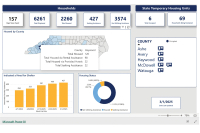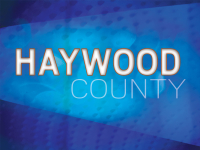Coalition nears fundraising goal for Ela Dam removal
 Ela dam. File photo
Ela dam. File photo
A coalition working to remove the aged Ela Dam in Swain County has raised $8 million of an estimated $10 million needed to complete the project.
Franklin-based Mainspring Conservation Trust, which will purchase the dam and oversee removal efforts, has received $4 million from the U.S. Fish and Wildlife Service’s National Fish Passage Program, which is funded by the Bipartisan Infrastructure Law. The N.C. Wildlife Resources Commission has committed another $4 million toward the project, but putting that contribution to use required approval from the Eastern Band of Cherokee Indians’ Tribal Council.
“It is no small feat to enter into a contract of this type and magnitude for something as unique that we are collectively working on,” said Joey Owle, Secretary of Agriculture and Natural Resources for the EBCI, which is leading the coalition. “This project truly embodies the meaning of effective partnership between a wide variety of partners.”
Owle updated Tribal Council on the funding during a May 31 Budget Council session during which he sought Council approval for a memorandum of agreement that would allow the tribe to receive the Wildlife Commission funding on behalf of Mainspring.
“This is a once-in-a-lifetime opportunity to where we can get federal [and] state funding to pay for this and carry out the project without having to take loans, without having to ask the tribe for any funding,” Owle said.
The dam removal project stems from an October 2021 incident in which the dam’s operator Northbrook Power Management inadvertently released a massive amount of sediment that blanketed the downstream river, severely impacting aquatic communities living there. Afterward, Owle approached the dam’s owner, Northbrook Carolina Hydro II, about removing the structure. In use since 1925, Ela Dam is approaching its 100th birthday and produces very little energy. Removing it will restore the natural flow of the river and allow fish and other aquatic organisms to move freely between its upstream and downstream reaches. The project is expected to reopen nearly 550 miles of habitat to sensitive and rare aquatic species like the sicklefin redhorse fish and Appalachian elktoe mussel.
Related Items
In February 2022, Tribal Council voted unanimously to take the lead on forming the dam removal coalition, but in a subsequent vote that June shot down a resolution committing the tribe to acquiring the property. Mainspring stepped up to fill that role, so the EBCI is acting as a pass-through entity, receiving the money and providing it to Mainspring to complete the project. Mainspring hopes to eventually give the 60-acre property to the tribe.
“This project is a true partnership, and it will take all of the partners at the table to see it through,” said Mainspring Executive Director Jordan Smith. “Northbrook continues to be a valuable partner in the coalition, and I am thankful for their continued commitment to the project as we work through the feasibility, design and fundraising phase of the project. “
Progress over the last year has been “remarkable,” Owle said.
“We’ve been able to do in 18 months what many tribes work decades doing,” he told Tribal Council.
Thus far, the coalition has applied for various grants worth about $25 million in total. It’s now learning the results of those applications. With $8 million now committed from the Wildlife Commission and USFWS, Owle said, he has a call scheduled with “another federal agency” that is willing to provide the remaining funds. Removal is expected to cost $6-$8 million, with another $2 million required to provide Mainspring with liability insurance.
According to Owle, the draft agreement with the Wildlife Commission would require the tribe to use the awarded funds solely to remove Ela Dam, give the Commission the opportunity to review and provide feedback on the project, notify the Wildlife Commission of any delays or concerns and submit a written report by Dec. 31, 2025.
The agreement is similar to that in effect for the Ravensfork dam removal project, in Cherokee’s Big Cove community, Owle said. The EBCI has raised $11 million for that project, of which $3 million is state funding. The project is under contract and approaching the 60% design benchmark.
Tribal Council members, three of whom were elected to their positions after the body’s 2022 votes on the project, had questions for Owle. Many of their queries focused on how the removal would impact upstream landowners who now have waterfront property on the reservoir. Once the dam is removed, the water would retreat into the riverbed, changing the way they currently use their property. Owle said he’s talked to two of the concerned enrolled members who have waterfront property and that neither opposed the project, but that both had questions about it.
Wolfetown Rep. Mike Parker, who was the sole member to vote against the resolution, said that he’s talked to several waterfront property owners — some enrolled members and others not — and that they were not in favor of dam removal. Why, he asked Owle, had no public hearings been held?
Owle replied that public hearings would be held once the project reaches the execution phase, but that thus far the coalition has been focused on fundraising. Additionally, the coalition has secured $800,000 for design and engineering work. That phase is 30% complete, and the coalition expects to reach the 90% mark by August.
Most Tribal Council members seemed satisfied with Owle’s answers to their questions. Ten members voted in favor of the resolution, with Parker the sole opposing vote. Painttown Rep. Michael Stamper abstained, saying he couldn’t vote in favor without seeing a copy of the draft agreement, which was not attached to the resolution. Owle told Stamper he would provide it promptly. He declined a request from The Smoky Mountain News to view the document.













